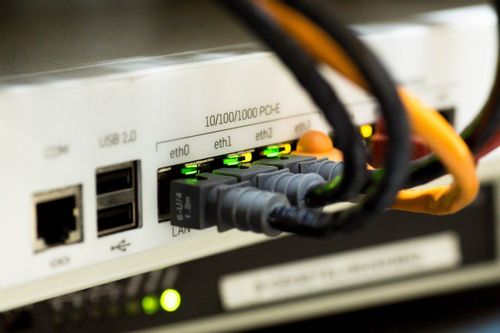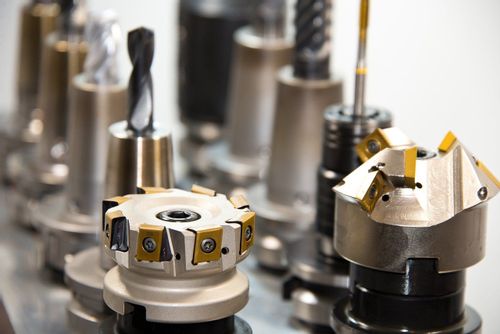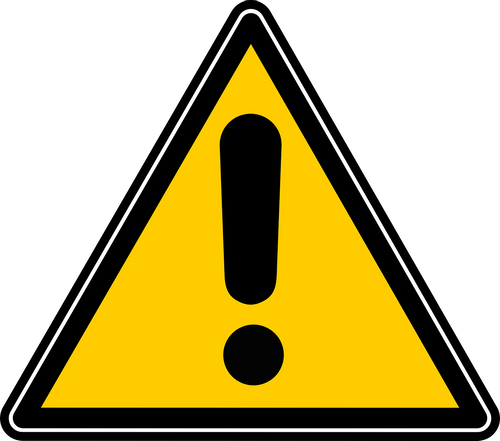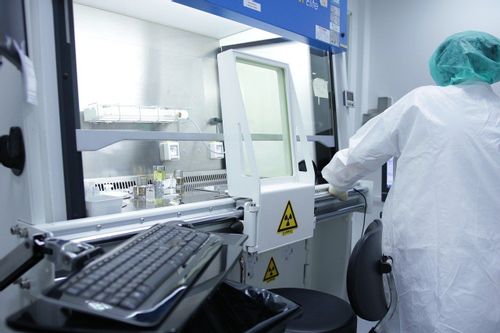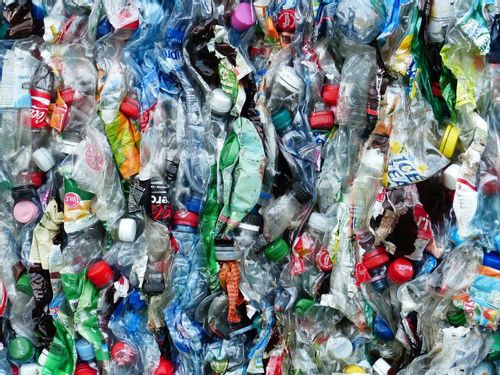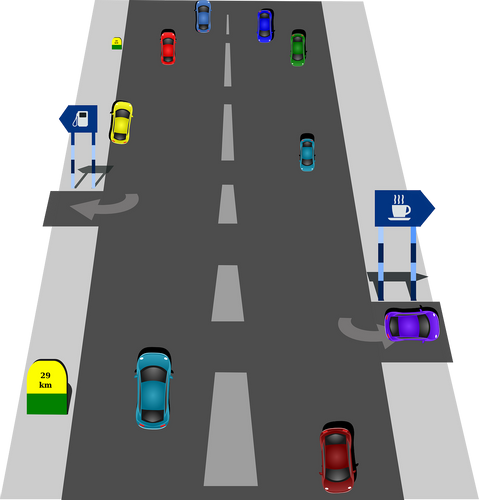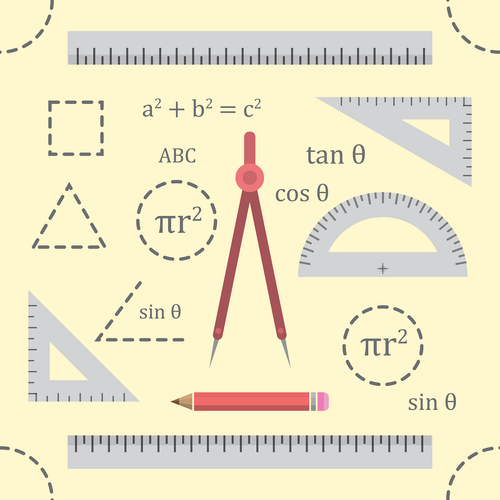Standards Packages
iTeh together with SIST has developed and compiled a comprehensive collection of standard packages to support your standard requirements. Our packages cover an array of content that includes quality management, risk management, road vehicles, machine safety, and much more. With over 200 packages to choose from, you are sure to find a collection to suit your standard needs.
Latest Standards
This document specifies a method for determination of the mechanical durability of pellets. The mechanical durability is a measure of the resistance of compressed fuels towards shocks and/or abrasion as a consequence of handling and transportation.
- Standard14 pagesEnglish languagesale 10% offe-Library read for1 day
This document specifies methods for the determination of major and minor element concentrations in solid recovered fuels after digestion by the use of different acid mixtures and by addition of a fluxing agent for solid recovered fuel (SRF) ash.
a) Method A: Microwave assisted digestion with hydrochloric, nitric and hydrofluoric acid mixture (6 ml HCl; 2 ml HNO3; 2 ml HF) followed by boric acid complexation;
b) Method AT: Microwave assisted digestion with hydrochloric, nitric and tetrafluoroboric acid mixture (6 ml HCl; 2 ml HNO3; 4 ml HBF4);
c) Method B: Microwave assisted digestion with hydrochloric, nitric and hydrofluoric acid mixture (0,5 ml HCl; 6 ml HNO3; 1 ml HF) followed by boric acid complexation;
d) Method BT: Microwave assisted digestion with hydrochloric, nitric and tetrafluoroboric acid mixture (0,5 ml HCl; 6 ml HNO3; 2 ml HBF4);
e) Method C: Microwave assisted digestion with nitric acid, hydrogen peroxide and hydrofluoric acid mixture (2,5 ml H2O2; 5 ml HNO3; 0,4 ml HF) and optional boric acid complexation;
f) Method CT: Microwave assisted digestion with nitric acid, hydrogen peroxide and tetrafluoroboric acid mixture (2,5 ml H2O2; 5 ml HNO3; 0,8 ml HBF4);
g) Method D: Digestion of the ashed SRF sample with fluxing agent lithium metaborate in an oven at 1 050 °C.
This document is applicable for the following major and minor/trace elements:
— Major elements: aluminium (Al), calcium (Ca), iron (Fe), potassium (K), magnesium (Mg), sodium (Na), phosphorus (P), sulfur (S), silicon (Si) and titanium (Ti).
— Minor/trace elements: arsenic (As), barium (Ba), beryllium (Be), cadmium (Cd), cobalt (Co), chromium (Cr), copper (Cu), mercury (Hg), molybdenum (Mo), manganese (Mn), nickel (Ni), lead (Pb), antimony (Sb), selenium (Se), tin (Sn), thallium (Tl), vanadium (V) and zinc (Zn).
Method A is applicable for general use for SRF and ashed SRFs, but the amount of the test portion can be very low in case of high concentration of organic matter. Method AT can be used if an alternative to HF is necessary.
Method B with a higher volume of nitric acid is applicable for SRFs with high organic matter (e.g. suitable for high plastic content) that can be difficult to digest with less nitric acid or as a substitute for method A if appropriate equipment is not available. Method BT can be used if an alternative to HF is necessary.
Method C with combination of nitric acid and hydrogen peroxide and addition of hydrofluoric acid is applicable for wood based SRFs (e.g. demolition wood) or when there is a need for comparability to solid biofuel standards. Method CT can be used if an alternative to HF is necessary.
Method D is specifically applicable for determination of major elements in ashed SRF samples.
XRF can be used for the analysis of major elements (Al, Ca, Fe, K, Mg, Na, P, S, Si, Ti) after ashing (815 °C) of the samples and several major and minor/trace elements in SRF can be analysed by XRF after suitable calibration provided that the concentration levels are above instrumental detection limits of the XRF instrumentation and after proper preliminary testing and validation.
Digestion methods with HF and subsequent boric acid complexation or application of method D are applicable for determination of Si and Ti (better digestion efficiency).
Alternative digestion methods can be applied, if their performance is proved to be comparable with those of the methods described in this document.
- Standard92 pagesEnglish languagesale 10% offe-Library read for1 day
DEN/ERM-TGUWB-627
- Standard49 pagesEnglish languagesale 15% off
- Standard49 pagesEnglish languagesale 15% off
- Standard49 pagesEnglish languagesale 15% off
- Standard49 pagesEnglish languagesale 10% offe-Library read for1 day
This European Standard deals with the safety of electric sewing machines for household and similar use, their rated voltage being not more than 250 V for single-phase and 480 V for other appliances.
- Amendment5 pagesEnglish languagesale 10% offe-Library read for1 day
This European Standard deals with the safety of electric insect killers for household and similar purposes, their rated voltage being not more than 250 V, including direct current (DC) supplied appliances and battery-operated appliances.
- Amendment5 pagesEnglish languagesale 10% offe-Library read for1 day
This European Standard deals with the safety of electrical recovery and/or recycle equipment to recover and/or recycle refrigerant from air conditioning and refrigeration equipment.
- Standard49 pagesEnglish languagesale 10% offe-Library read for1 day
This European Standard deals with the safety of stand-alone electric spin extractors, and pin extractors incorporated in washing machines that have separate containers for washing and spin extraction for household and similar purposes that have a capacity not exceeding 10 kg of dry cloth and a drum peripheral speed not exceeding 50 m/s, their rated voltages being not more than 250 V for single-phase appliances and 480 V for other appliances
- Standard25 pagesEnglish languagesale 10% offe-Library read for1 day
This document specifies requirements and test methods for the physical properties of powered toothbrushes in order to promote the safety of these products for their intended use.
There are different technologies of powered toothbrushes. Common features of those powered toothbrushes to which this document applies are:
— a battery;
— a motor;
— a mechanical or magnetic drive system;
— a moving brush head with tufted filaments.
Powered toothbrushes can have a moving brush head with different motions (e.g. oscillating-rotating, side-by-side), frequencies and velocities.
These types of electric toothbrushes are tested for safety in use by means of appropriate test procedures or clinical studies
The requirements listed in this document apply to all types of powered toothbrushes. However, there is a possibility that some requirements are not applicable for all types. For example, brush head plate retention can only be applied if the brush has a head portion that can detach from the brush shaft. In addition, for the filaments end-rounding requirements, this document does not apply to filament types that are very thin (less than 0,1 mm outside diameter) or have no sharp edges (e.g. tapered, feathered, with split tips or spherical cap) or non-synthetic filaments, where applying the end-rounding process is inappropriate or impossible.
This document is not applicable to other types of powered oral hygiene devices (such as powered interdental brushes) or manual toothbrushes.
- Standard27 pagesEnglish languagesale 10% offe-Library read for1 day
This document gives guidance on the use of colour codes to inform people at risk as well as first response personnel about danger and to express the severity of a situation.
This document is applicable to all types of hazard in any location.
This document does not apply to the method for displaying colour codes, detailed ergonomic considerations related to viewing displays or safety signs covered by ISO 3864-1.
- Standard19 pagesEnglish languagesale 10% offe-Library read for1 day
This document establishes requirements, test procedures, assessment methods and acceptance criteria for operating rolling stock in open track. For pressure variations and slipstream effects beside the track, requirements and assessment methods are provided. For running resistance, assessment methods are addressed in this document. Load cases on infrastructure components due to train-induced pressure variations and slipstream effects are addressed in this document. For ballasted track test set-ups for ballast projection assessment are proposed.
The requirements only apply to rolling stock of the heavy rail system with maximum train speeds above 160 km/h and not to other rail systems. The document is applicable to all rolling stock and infrastructure in open air with nominal track gauges of 1 435 mm to 1 668 mm inclusive.
- Standard60 pagesEnglish languagesale 10% offe-Library read for1 day
This document specifies the requirements for technical procedures, quality inspection, etc. for the surface treatment of austenitic stainless steel parts (e.g. 300 series, AISI 651, A286 or equivalent). This document applies to the removal of organic and inorganic contaminants, surface cleaning, surface finishing and surface passivation before the non-destructive test of austenitic stainless steel parts.
- Standard11 pagesEnglish languagesale 15% off
This document specifies a method for the determination of the specific electrical resistivity of cathode blocks and baked anodes used in the production of aluminium, using samples at ambient temperature.
- Standard4 pagesEnglish languagesale 15% off
NOTE Clause A.2 contains guidance or rationale for this clause. This document specifies requirements for small-bore connectors intended to be used for connections in neural applications. This document does not specify requirements for the medical devices or accessories that use these connectors. Such requirements are given in particular standards for specific medical devices or accessories.
- Standard31 pagesEnglish languagesale 15% off
- Standard32 pagesFrench languagesale 15% off
This document specifies a test method for the quantitative determination of the antifungal activity by measuring the intensity of luminescence produced by an enzymatic reaction [adenosine triphosphate (ATP) method]. This document is applicable to various kinds of textile products, such as fibres, yarns, fabrics, clothing, bedclothes, home furnishings and other miscellaneous goods.
- Standard19 pagesEnglish languagesale 15% off
- Standard20 pagesFrench languagesale 15% off
This document specifies requirements for producing and testing a dyed sulfuric acid anodic coating on aluminium alloys. The anodizing process is applied in the manufacture of aerospace products to improve paint adhesion and resistance to corrosion and can colour the part in accordance with the drawing requirements.
- Standard8 pagesEnglish languagesale 15% off
This document provides a telehealth cybersecurity reference model of the overall security framework for systems and services applied to telehealth. This document contains a general description of: — factors of telehealth cybersecurity threats; — relationships between security risks and safety risks in telehealth services; — methodologies for defining security levels in telehealth services; — a cybersecurity reference model of telehealth services. Defining the specific type of telehealth services is not covered in this document.
- Technical specification12 pagesEnglish languagesale 15% off
This part of IEC 60204 applies to electrical, electronic, programmable electronic equipment and systems to hoisting machines and related equipment, including a group of hoisting machines working together in a co-ordinated manner NOTE 1 In this part of IEC 60204, the term "electrical" includes both electrical and electronic matters (i.e. "electrical equipment" means both the electrical, electronic and programmable electronic equipment). NOTE 2 In the context of this part of IEC 60204, the term “person” refers to any individual and includes those persons who are assigned and instructed by the user or user’s agent(s) in the use and care of the hoisting machine in question. The equipment covered by this part of IEC 60204 commences at the point of connection of the supply to the electrical equipment of the hoisting machine (crane-supply-switch) and includes systems for power supply and control feeders situated outside of the hoisting machine, for example, flexible cables or conductor wires or conductor bars (see Figure 3). NOTE 3 The requirements for the electrical supply installation of electrical equipment of a hoisting machine are given in IEC 60364. This standard is applicable to equipment or parts of equipment not exceeding 1 000 V AC or 1 500 V DC between lines and with nominal frequencies not exceeding 200 Hz. NOTE 4 Special requirements for electrical equipment of hoisting machines intended to be operated at higher voltages, see IEC 60204-11 (Annex D) This part of IEC60204 does not cover all the requirements (for example guarding, interlocking, or control) that are needed or required by other standards or regulations in order to protect persons from hazards other than electrical hazards. Each type of hoisting machine has unique requirements to be accommodated to provide adequate safety. This part of 60204 doesn´t cover noise risks and vibration risks. Additional and special requirements can apply to the electrical equipment of hoisting machines including those that - handle or transport potentially explosive material (e.g. paint or sawdust); - are intended for use in potentially explosive and/or flammable atmospheres; - have special risks when transporting or moving certain materials - are intended for use in mines. For the purposes of this standard, hoisting machines include cranes of all types, winches of all types and storage and retrieval machines. The following product groups are included: - overhead travelling cranes; - mobile cranes; - tower cranes; - slewing luffing cranes; - gantry cranes; - offshore cranes; - floating cranes; - winches of all types; - hoists and accessories; - loader cranes; - cable cranes; - load holding devices; - storage and retrieval machines; - monorail hoists; - straddle carriers; - rubber tyred gantry cranes (RTGs). NOTE 5 Definition of the different crane types see ISO 4306-1 This standard does not cover individual items of electrical equipment other than their selection for use and their erection.
- Draft141 pagesEnglish languagesale 10% offe-Library read for1 day
This document specifies the requirements for technical procedures, quality inspection, etc. for the surface treatment of martensitic, precipitation hardening and maraging stainless steel parts (e.g.400 series, 17-7PH, 17-4PH, 15-5PH, AM350, AM355, PH15-7Mo, PH13-8Mo, Custom 450 and 455 or equivalent). It provides practical methods for removing contaminants and for obtaining suitable corrosion resistance for aerospace applications. This document applies to the removal of organic and inorganic contaminants, surface cleaning, surface finishing and surface passivation before non-destructive inspection of martensitic, precipitation hardening and maraging stainless steel parts.
- Standard11 pagesEnglish languagesale 15% off
This document specifies requirements for producing and testing an undyed sulfuric acid anodic coating on aluminium alloys. The anodizing process is applied in the manufacture of aerospace products to improve paint adhesion and resistance to corrosion.
- Standard8 pagesEnglish languagesale 15% off
This document specifies information metadata, metrics metadata, clinical data linkage metadata, auxiliary fields, SAM interoperability, protection metadata and programming interfaces of genomic information. It defines: — metadata storage and interpretation for the different encapsulation levels as specified in ISO/IEC 23092-1 (in REF Section_sec_6 \r \h Clause 6 08D0C9EA79F9BACE118C8200AA004BA90B02000000080000000E000000530065006300740069006F006E005F007300650063005F0036000000 ); — metrics metadata containing sequencing data metrics at the dataset and access unit levels as specified in ISO/IEC 23092-1 (in REF Section_sec_7 \r \h Clause 7 08D0C9EA79F9BACE118C8200AA004BA90B02000000080000000E000000530065006300740069006F006E005F007300650063005F0037000000 ); — clinical data linkage metadata stored at the dataset group, dataset and annotation table levels as specified in ISO/IEC 23092-1 (in REF Section_sec_8 \r \h Clause 8 08D0C9EA79F9BACE118C8200AA004BA90B02000000080000000E000000530065006300740069006F006E005F007300650063005F0038000000 ); — protection elements providing confidentiality, integrity and privacy rules at the different encapsulation levels as specified in ISO/IEC 23092-1 (in REF Section_sec_9 \r \h Clause 9 08D0C9EA79F9BACE118C8200AA004BA90B02000000080000000E000000530065006300740069006F006E005F007300650063005F0039000000 ); — how to associate auxiliary fields to encoded reads (in REF Section_sec_10 \r \h Clause 10 08D0C9EA79F9BACE118C8200AA004BA90B02000000080000000F000000530065006300740069006F006E005F007300650063005F00310030000000 ); — interfaces to access genomic information coded in compliance with ISO/IEC 23092-1 and ISO/IEC 23092-2 (in REF Section_sec_12 \r \h Clause 12 08D0C9EA79F9BACE118C8200AA004BA90B02000000080000000F000000530065006300740069006F006E005F007300650063005F00310032000000 ); — mechanisms for backward compatibility with existing SAM content, and exportation to this format (in Annex E).
- Standard120 pagesEnglish languagesale 15% off
Benefits

Full Standards Solution
Our catalog includes not only latest standards but also full meta information about related standardization project lifecycle.

Cost Effective
Our PRICE MATCH GUARANTEE policy with multi-level volume discounts gives our clients the best option in the market. In addition, you can get access to the standards for 3, 10, or 30 days.

Stay Notified
Get alerted to the latest revisions and new standards in the Weekly Newsletter. Standards are constantly changing. Don’t miss a revision that can impact your business.
About Us
iTeh Inc is a software development and IT consulting team of professionals who provide consulting, development and implementation of solutions for all types of businesses.
In cooperation, with the Slovenian Institute of Standardization (SIST), we create a unique solution that covers all aspects of the lifecycle of Standardization organizations. iTeh Standards is a part of the solution that helps SIST to provide and sell their products to Customers.
iTeh Standards Store is an evolving project, our goal is to build long-term relationships with our customers. We believe in delivering quality services to solve our customers' challenges and define success by exceeding our customers' expectations. We are always ready to listen and our experience allows us to provide our customers with helpful effective suggestions. You can contact us by email.
We are committed to providing the best possible experience for our customers.
Compliance with international standards is increasingly becoming one of the key competitive advantages in the global market. Our company creates all conditions for the most comfortable implementation of new documents and norms in the processes carried out by your organization. Some of the key advantages of working with us are:
- Cost-effective - multi-level discounts and permanent updates of the functions give our clients the best option on the market.
- e-Library - access to standards for a period of time of your choice. It is a cost-effective solution for keeping updated with the newest standards.
- Company-wide documents - create a company account and connect all employees with access to purchased standards, e-Library documents, and packages.
- All in one spot - all purchased standards are kept in one place with controlled access by the account administrator.
- Client-centric - providing quality consulting is the prerogative and incentive to create new products that accompany your success and scale.
- 24 / 7 client support
We are dedicated to building mutually beneficial and long-term relationships with our clients. That is why our team focuses on creating services to help our customers develop and achieve new productive results.








